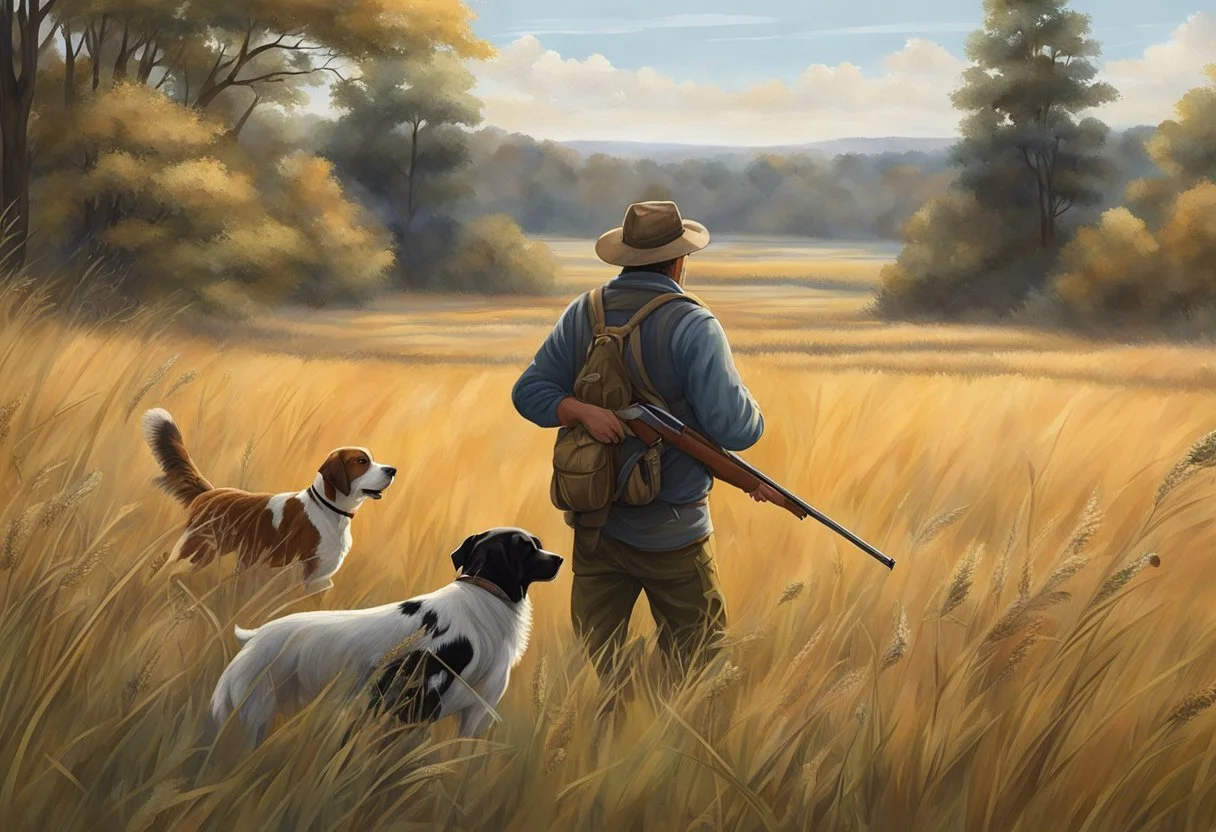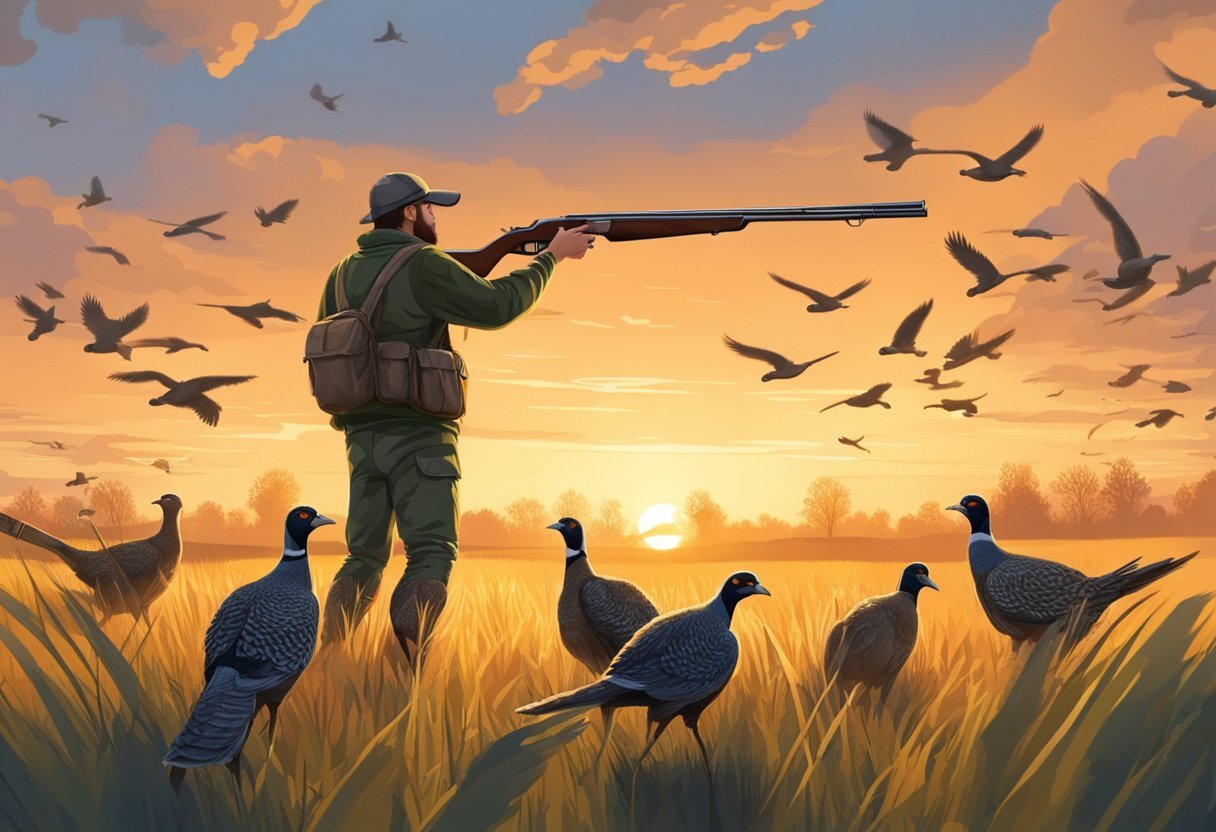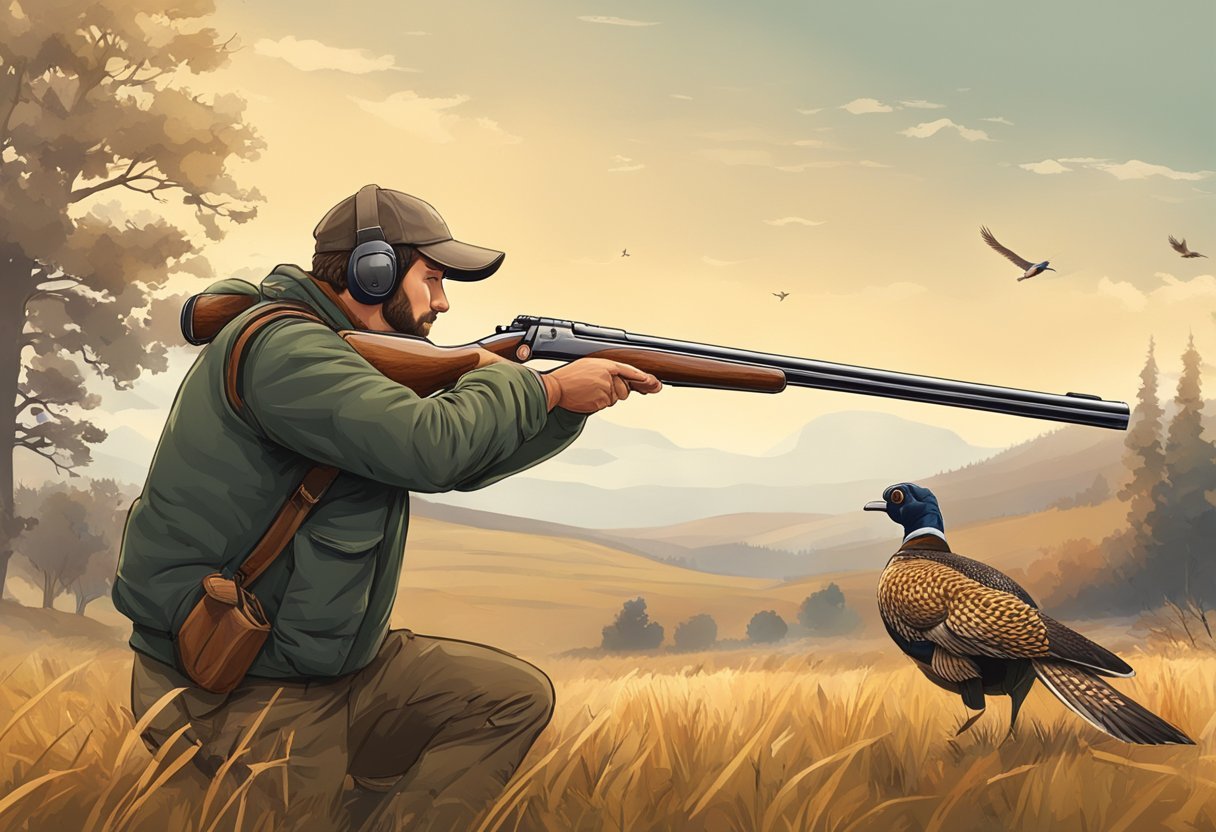Pheasant Hunting for Beginners
Essential Tips and Techniques
Discover > Hunting for Dummies > Pheasant Hunting for Beginners
The pheasant hunt has long been a popular pastime for both experienced and novice hunters alike. Known for their bright plumage and exhilarating flushes, these game birds offer an exciting, fun and rewarding experience for those who seek the thrill of the hunt. If you're a beginner looking to venture into the world of the pheasant hunt, there are a few essential tips and techniques to keep in mind as you prepare for your first outing.
Before you don your camouflage gear and head out into the field, it's crucial to familiarize yourself with the basics of pheasant biology and birds behavior. Understanding where these birds tend to dwell, their preferred food sources, and their natural instincts will greatly assist you in locating and successfully targeting your quarry. Additionally, being aware of the various hunting seasons, how the season progresses, and local regulations will ensure that you're hunting ethically from the opening day and within the guidelines set forth by wildlife agencies.
Equally important is your choice of equipment. Selecting the right shotgun, ammunition, and hunting attire can significantly impact your overall success and enjoyment during the hunt. Just as a painter needs the appropriate brushes and canvas for their masterpiece, a good hunter requires the proper tools and preparation to ensure a fulfilling and safe experience in the field.
The Basics of Pheasant Hunting
The Pheasant Hunt Defined
A Pheasant hunt refers to pursuing these game birds for sport and food, using methods such as shooting, trapping, or hunting dogs. It is a popular activity enjoyed by many, particularly beginners, who appreciate the challenging yet rewarding nature of the hunt.
Relevance of the Pheasant Hunt
The pheasant hunt has a long history across the globe. In fact, it was introduced to North America from Asia in the late 1800s, and it has since become a popular sport in many regions. Some of the benefits to hunt pheasants include:
Conservation: Pheasant hunters contribute to maintaining healthy pheasant populations by controlling numbers and preventing overpopulation.
Economic Impact: Pheasant hunters contribute to local economies through hunting licenses, equipment sales, and tourism.
Outdoor Enjoyment: This activity allows people to enjoy nature and learn more about the ecosystems they are exploring.
Common Species of Pheasants
Ring-necked Pheasant: The most common and widespread species in North America. The male has a distinct white ring around the neck, a long tail, and colorful plumage, while the female has a brownish, camouflage-like appearance.
Golden Pheasant: Known for its stunning array of red, blue, yellow, and green feathers, this species is native to China and has been successfully introduced in other countries, including the United States.
Silver Pheasant: Recognized by its striking black and white plumage and red facial wattles, this species is native to the forests of Southeast Asia.
Getting Started
Understanding Hunting Laws and Regulations
Before embarking on your beginners pheasant hunting journey, it is crucial to familiarize yourself with the laws and regulations governing hunting in your area. These rules may vary from state to state, so consult your local wildlife agency for the most accurate information. Some common requirements include:
Hunting License: A license must be obtained to hunt within a given jurisdiction legally. Licenses can usually be purchased online or from authorized vendors. The state also imposes specific requirements for obtaining a license, such as age and hunter safety education.
Hunting Season: The exact dates for pheasant hunting vary by state and may also vary based on your residency status.
Bag Limits: The legal limit of how many birds can be harvested daily by each hunter is known as the "bag limit." These restrictions ensure the sustainability of birds populations.
Remember: Violations of hunting laws and regulations can result in fines, penalties, or even revocation of your hunting license. Ignorance is no excuse, and always practice ethical hunting.
Step by Step Beginner's Guide
For a successful pheasant hunt, follow this basic guide:
Get Licensed: Acquire the necessary hunting license and familiarize yourself with local laws and regulations.
Choose Your Equipment: Decide on the desired firearm, such as a shotgun, and familiarize yourself with its operation and safety features. Wear appropriate clothing, including blaze orange gear for visibility to other hunters.
Scout Locations: Research or scout public and private hunting areas that are known for their pheasant populations. Obtain permission from landowners if necessary.
Find a Mentor or Join a Group: Many experienced hunters are willing to share their knowledge of pheasant hunting tips with beginners. Hunting in a group can also increase your chances of success as you naturally pick up invaluable pheasant hunting tips.
Practice Shooting: Target practice or clay shooting can drastically improve your accuracy and confidence in the field.
Study Pheasant Behavior: Understand pheasant habitat, feeding patterns, and signs to increase your likelihood of successful bird hunting.
Prepare for the Hunt: Gather all necessary equipment, including your firearm, ammunition, clothing, and any field dressing or tracking supplies.
Hunt Responsibly: Always prioritize safety, follow ethical hunting practices, and respect the land and its wildlife.
Essential Equipment for Pheasant Hunting
Choosing the Right Shotgun
Selecting a suitable shotgun is critical for a successful pheasant hunting experience. Common options for beginners are 12-gauge and 20-gauge shotguns, with 12-gauge being more powerful and versatile. A 20-gauge shotgun is lighter and has less recoil, making it an excellent choice for new hunters. When considering the type of shotgun, semi-automatic and over-under shotguns are the most popular choices. Semi-automatic shotguns offer a rapid follow-up shot, while over-under shotguns provide a more traditional shooting experience with two quick shots.
Appropriate Hunting Gear
Wearing appropriate clothing is essential for both safety and comfort while pheasant hunting. Blaze orange apparel is highly recommended, as it increases visibility among fellow hunters. Here is a list of suggested clothing items:
Blaze orange hat or cap: This will make you easily recognizable to other hunters.
Blaze orange vest or jacket: Choose a garment with sufficient padding to cushion the shotgun recoil.
Brush pants or chaps: These reinforced pants protect your legs from thorny brush and tall grass.
Waterproof and insulated boots: These will keep your feet dry and warm in wet, muddy, or snowy conditions.
When selecting hunting apparel, look for materials that are durable, waterproof, and breathable for maximum comfort in various weather conditions.
Important Hunting Gear
In addition to a shotgun and proper clothing, there are essential items that one should carry while pheasant hunting. Here is a list of crucial gear:
Shooting glasses: These protect your eyes from debris and enhance your vision in various lighting conditions.
Ear protection: Foam earplugs or earmuffs can help prevent hearing damage from repeated exposure to gunfire.
Ammunition: Bring enough shells for your planned hunting trip, including different loads for various shooting situations for ideal shotgun action.
First aid kit: Accidents can happen; carry essential first aid supplies to handle minor injuries.
Game carrier or vest with a game pouch: A comfortable way to hold birds while keeping your hands free.
Hunting in Different Terrains
Understanding Pheasant Habitats
Pheasants and other wild birds inhabit a variety of terrains, but are commonly found in grasslands, agricultural fields, and wetlands. Recognizing the key features of pheasant habitats can improve your chances of success when hunting. An ideal habitat includes:
Food sources: Agricultural crops (such as corn and sorghum), (how long does sorghum last?) berries, insects, and seeds provide essential nutrition for pheasants and more birds.
Cover: Pheasants rely on thick grasses, shrubs, and brush, as well as sparse cover to hide from predators and rest.
Water sources: Proximity to ponds, creeks, or other water sources are crucial for their survival.
Hunting in Thick Cover
When hunting pheasants, it is essential to explore areas with thicker cover. These locations provide the best opportunity to encounter pheasants, as they often prefer to rest and forage in dense vegetation. Here are some tips for hunting in thick cover areas:
Be patient: For most hunters, navigating through thicker cover can be challenging, take your time to avoid scaring away pheasants.
Use a dog: A well-trained hunting bird dog can help flush wild, wily roosters from their hiding spots.
Be prepared: Bring appropriate gear, such as a machete or brush pants to make your way through dense vegetation.
Ideal Hunting Regions
Some states provide better opportunities for a pheasant hunt than most states due to optimal habitat and pheasant populations. The following table lists some of the top pheasant hunt states in the US:
While these states offer excellent hunting opportunities, a pheasant hunt can still be an enjoyable experience in many other regions. Research public lands and State Wildlife Agencies within your area, and always be mindful of local regulations and guidelines on public land.
Hunting Techniques
Hunting with Dogs
Pheasant hunters enjoy working with well-trained hunting dogs. It is one of the most effective and enjoyable partnerships. There are a variety of pheasant dog breeds, such as Pointers, Retrievers, and Setters, which have been specifically bred for hunting. These dogs have innate abilities to detect, flush, and retrieve game, but they still require proper training.
To maximize your success, it is essential to teach your dog commands like stay, heel, fetch, and release. Moreover, establishing a communication system with your hunting dog is crucial – using verbal commands, whistle signals, or hand gestures. Training your dog to work with you as a team will significantly improve your chances of a successful hunt.
Without a Dog
Though hunting pheasants with dogs provides many advantages, it is still possible to hunt pheasants effectively without a dog. For dog less hunters the key is to locate areas with signs of pheasant presence, such as droppings, tracks, or feathers. Walk slowly and quietly through tall grass, brush, or other cover where pheasants are likely to fly or hide. When flushing pheasants, be prepared for their sudden, fast flight patterns.
Hunters can also use the following strategies:
Team up with existing hunters to create a line and march through the field, flushing pheasants from their hiding spots.
Find the wind direction and approach the hunting area from downwind, making it harder for pheasants to detect your scent.
Hunt early in the morning or late in the afternoon when pheasants are typically more active.
Blocker Technique
The blocker technique is a common tactic used when hunting pheasants, both with or without dogs. In this method, hunters are positioned at the end of a field or hunting area to intercept fleeing pheasants. Incorporating a blocker into the hunting strategy can significantly increase the chances of a successful hunt by preventing pheasants from escaping.
Here's an example of how to set up a blocker technique:
Hunter 1 will position themselves at one end of the hunting area, walking, while Hunter 2 walks parallel to them, but at the opposite end of the field, moving in the same direction. This coordinated effort puts flushed pheasants between both hunters, improving the chance of a successful hunt.
Prepping for the Hunt
Before embarking on your first pheasant hunting adventure, it's essential to prepare for the experience properly. This section covers key aspects to consider such as optimal gun range and targets, as well as understanding bag limits. Proper preparation will help ensure a successful and enjoyable hunt.
Optimal Shooting Range & Targets
When starting with pheasant hunting, it's crucial to identify the best gun range to practice your skills. For beginners, a range of 25-35 yards is an effective starting point. This provides enough distance to comfortably aim and shoot while still being close enough for a higher success rate.
To maximize your practice, consider using targets specifically designed for pheasant hunting. These targets often feature life-size images of pheasants in various flight positions. Practice with different shot sizes, ideally within the range of 4-6. This will help you familiarize yourself with the most effective shot sizes for pheasant hunting.
Remember to also take note of shooting hours. Pheasants are typically most active during the early morning and late afternoon. These times are ideal for hunting, as it mimics the natural activity of flying the birds.
Understanding Bag Limits
An important aspect of any hunting trip is adhering to established bag limits. These limits, set by local wildlife authorities, regulate the number of pheasants that each individual or group can harvest. Bag limits vary depending on location, so be sure to check the regulations for the area you plan to hunt.
A sample bag limit table might look like this:
After the Hunt
Once the hunt is over, proper handling and preparation are necessary to ensure the best possible taste and texture of your wild game. In this section, we'll cover cleaning and cooking your hunted pheasants.
Cleaning and Cooking Wild Game
1. Cleaning:
It is important to clean the pheasants as soon as possible. Start by removing the feathers:
Plucking: Remove all of the feathers from the pheasant's body, starting with the wings and tail.
Skinning: If preferred, remove the skin from the pheasant by making an incision on the back and carefully cutting the skin away from the muscle.
Next, remove the innards:
Gutting: Make a shallow cut in the abdomen, from the vent to the breastbone. Be careful not to puncture any internal organs. Remove the intestines, liver, heart, and lungs. If desired, save the heart and liver for later use.
2. Cooking:
There are many ways to cook pheasant, but here are a few popular methods:
Roasting: Season the pheasant with salt, pepper, and herbs. Place it on a rack in a roasting pan, and cook at 350°F (175°C) for approximately 25 minutes per pound.
Grilling: Marinate the pheasant in your choice of sauce, and grill over medium heat for about 10-15 minutes per side, until the internal temperature reaches 160°F (70°C).
Braising: Season and brown the pheasant in a skillet with oil, then add a small amount of liquid such as wine or broth. Cover and simmer for 45 minutes to an hour, until the meat is tender.
Remember that pheasant can easily become dry due to its low-fat content, so choose a cooking method that will preserve its moisture and tenderness.
Whatever method you select, always ensure the pheasant reaches a minimum internal temperature of 165°F (74°C) to kill any potential pathogens.
Conclusion
In summary, pheasant hunting is a thrilling and rewarding activity for beginners and experienced hunters alike. With the right information and hunting tips, of course, a novice hunter can quickly become adept in this popular form of upland bird hunting.
It is essential to gain a foundational understanding of pheasant behavior and habitat. These elusive birds favor edges such as fence lines, ditches, buffer strips, cattail marshes, and CRP fields. Familiarizing oneself with these environments enhances the hunting experience and increases success rates during the opening day of the upland bird season.
Working with experienced bird dogs is a crucial factor in enjoying a successful hunt. An experienced dog with a keen sense of scent will effectively locate and flush out pheasants even in dense cover. Many hunters consider their bird dogs indispensable, not only for their ability to find birds but also for their companionship and loyalty in their partnership in pursuing excellent hunting.





